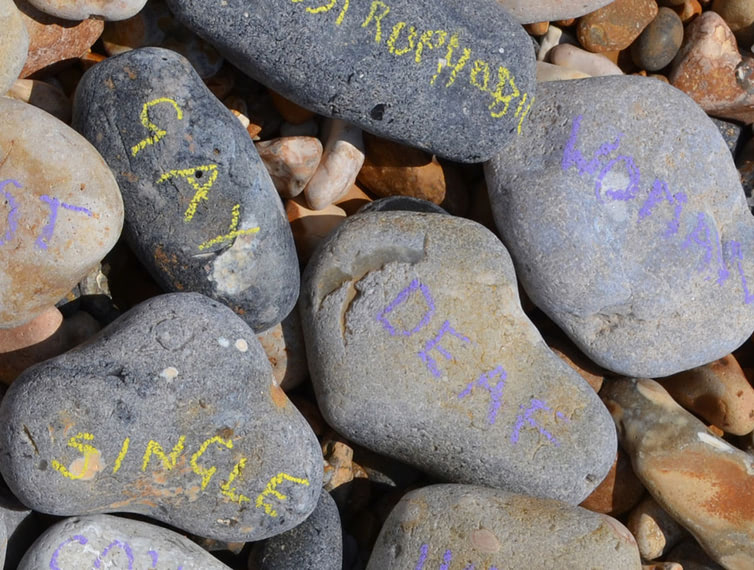Limiting Good Practice to the 9 Protected Characteristics: Big Equality, Diversity and Inclusion Mistake No 3

As far as Diversity & Inclusion mistakes go, this one is very straightforward. It’s a mistake that a lot of organisations make, but it’s also one that’s very easy to put right.
Avoid these 5 Big Equality, Diversity and Inclusion Mistakes in 2019:
Mistake Number 1 – Thinking a Robust EDI Policy is Enough
Mistake Number 2 – Focussing on What You Should and Shouldn’t Do
Mistake Number 3 – Limiting Good Practice to the 9 Protected Characteristics
I’m going to describe them to you over the next few issues of FE News so that you can avoid those mistakes in your own organisation.
Mistake Number 3 – Limiting Good Practice to the 9 Protected Characteristics
Let’s start with a quick recap on the 9 Protected Characteristics under the Equality Act 2010.
The characteristics are:
- Age
- Disability
- Gender reassignment
- Marriage and civil partnership
- Pregnancy and maternity
- Race
- Religion or belief
- Sex
- Sexual orientation
Discrimination against someone because of one or more of these characteristics is unlawful under the Equality Act 2010. We all have some of these characteristics – age, for example, applies to every person on the planet – so the law is for everyone’s protection.
Part of Diversity & Inclusion good practice for training providers involves communicating bite-sized information relating to these characteristics to your teams.
This might include things like:
- Raising awareness of religious holidays
- Information on assisting customers with mobility issues or hearing loss
- A reminder of rights and regs for pregnant staff members
- Sources of help for people experiencing or witnessing race discrimination
Let’s face it – there are so many topics you could cover. Creating simple, accessible communications that bring everyday reality to the legislation will help to build the kind of knowledge and understanding that makes bad practice less likely.
A fairer environment for EVERYONE
It’s very important to build understanding of the 9 Protected Characteristics, but it’s also important to appreciate that Equality, Diversity & Inclusion good practice doesn’t end there.
As we’ve already discovered, building a good understanding and practice of Equality & Diversity is not about Dos and Don’ts, but about changing everyday culture and thinking a little bit differently, a little more widely.
For a real culture change, words like Equality, Diversity and Inclusion must apply to everyone. There’s actually a lovely, simple formula for to make this happen in any organisation.
Quite simply, the formula is this:
If you apply good Equality, Diversity & Inclusion standards to EVERYONE, you are inevitably applying them to the 9 Protected Characteristics.
Thinking in this broader way not only takes care of the 9 Protected Characteristics without having to think about them in terms of Dos and Don’ts for particular individuals and groups, but it also creates a pleasanter and fairer environment for EVERYONE.
What’s more, consciously applying Equality, Diversity & Inclusion to EVERYONE encourages buy-in of your organisation’s practices from EVERYONE in it.
That’s important for building understanding, cooperation, fairness and for creating a level playing field where no one particular group or characteristic is seen as more entitled to Diversity & Inclusion protection than another.
Diversity Trumps
This level playing field is important because if you don’t have it, you could end up involved in the kind of disputes that are sometimes called ‘Diversity Trumps’.
Diversity Trumps have been a feature of quite a few high-profile legal disputes. Diversity Trumps is when one person’s protection by the Equality Act seems to conflict with another’s.
Whose rights are more important when, for example, a woman’s rights seem to be in conflict with the rights attached to a particular religious practice? Both are protected characteristics (Sex and Religion).
Diversity Trumps can also apply where one side of the argument seems to be protected under the 9 Characteristics and the other side doesn’t. You may think on the face of it, that there is a clearer path to take in such a situation, but this isn’t necessarily so. And this kind of dispute can be just as damaging as one where the conflict appears to be between the rights of two of the Protected Characteristics.
Avoiding Resentment
Limiting practice to the 9 Characteristics can create a ‘them and us’ resentment, with the idea that the rights, feelings and beliefs of some people are more important than those of others. This can actually do the opposite of building a real diversity culture. Instead, it can fuel animosity, cynicism and prejudice amongst those who don’t feel protected.
An essential part of all Equality & Diversity good practice (and any genuinely inclusive workplace culture) is that everyone in an organisation understands that good practice is there for every single person in that organisation. It’s to support and protect EVERYONE. No ifs, no buts.
Limiting Equality, Diversity & Inclusion practice to the 9 Protected Characteristics is no easier than applying good practice to everyone. What you need to do is simple: think about the 9 Protected Characteristics, but also think beyond them.
Remind yourself that EVERYONE in your organisation – including service users – is protected, and act accordingly.
Johnny Johnson works with training providers, delivering Equality, Diversity, Inclusion and Safeguarding training that’s straightforward and effective.
See also:
Mistake Number 1 – Thinking a Robust EDI Policy is Enough
Mistake Number 2 – Focussing on What You Should and Shouldn’t Do
Mistake Number 3 – Limiting Good Practice to the 9 Protected Characteristics











Responses